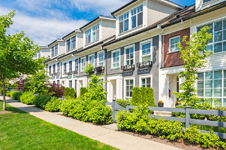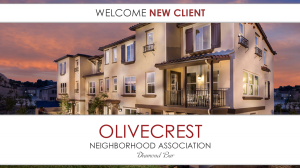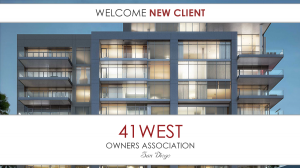 The homestead exemption protects the value of a homeowner’s primary residence in the event of a bankruptcy. Specifically, it provides that a specified portion of equity in a homestead is exempt from execution to satisfy a judgment debt. Existing state law prescribes that the amount of this homestead exemption is $75,000 for single homeowners, $100,000 for married homeowners, or $175,000 for homeowners who are seniors and/or disabled. (Code Civ. Proc., § 704.730(a).)
The homestead exemption protects the value of a homeowner’s primary residence in the event of a bankruptcy. Specifically, it provides that a specified portion of equity in a homestead is exempt from execution to satisfy a judgment debt. Existing state law prescribes that the amount of this homestead exemption is $75,000 for single homeowners, $100,000 for married homeowners, or $175,000 for homeowners who are seniors and/or disabled. (Code Civ. Proc., § 704.730(a).)
Since the inception of the homestead exemption, California Courts have liberally construed declarations of homestead. (see Johnson v. Brauner (1955) 131 CA2d 713, 722, 281 P2d 50.) California Courts have taken this lenient approach because ‘the law and facts to promote the beneficial purposes of the homestead legislation to benefit the debtor’” [Phillips v. Gilman (In re Gilman) (9th Cir. 2018) 887 F3d 956, 964 quoting Tarlesson v. Broadway Foreclosure Invs., LLC, 184 CA4th 931, 936, 109 CR3d 319 (2010)]. Emphasis added.) However, existing law does not provide for any modifications or adjustments to account for inflation. The legislature has identified this oversight and provided an avenue for correction to this approach.
On September 18, 2020, Governor Newsom signed Assembly Bill No. 1885 (“AB 1885”), which drastically modifies a debtor’s protection in their homestead in the event of a bankruptcy. AB 1885, which took effect January 1, 2021, makes two (2) important changes:
- Makes the homestead exemption the greater of $300,000 or the countywide median sale price of a single-family home in the year prior to the year in which the judgment debtor claims the exemption, not to exceed $600,000.
- Adjusts annually for inflation, beginning on January 1, 2022, based on the change in the annual California Consumer Price Index for All Urban Consumers for the prior fiscal year, published by the Department of Industrial Relations.
While the sharp increase in the value of the homestead exemption may be staggering at first blush, AB 1885 is adjusting state law to account for the drastic increase in property values that California has experienced over the past several years.
The Effect of a Homestead Exemption
A declared homestead limits the extent to which a subsequently recorded judgment lien, other than a judgment lien based on a judgment for child or spousal support, will attach to the declared homestead. As a result, a judgment lien attaches only to the surplus value of the property over the amount of the homestead exemption, plus the amount of all liens and encumbrances on the declared homestead at the time the abstract of judgment is recorded to create the judgment lien. (Code Civ. Proc., § 704.950; see also Code Civ. Proc., § 487.025(b).) Thus, if there is no “surplus equity” when the judgment lien is recorded, the judgment lien may not be enforced to any extent.
Additionally, the homestead exemption applies to any interest of the judgment debtor in a homestead [Code Civ. Proc., § 704.720(a)] and to all procedures for enforcement of a money judgment [Code Civ. Proc., § 703.010(a)].
In light of the foregoing, bankruptcy courts may experience an increase in bankruptcy filings for homeowners struggling with mounting debt but have built equity in their home.
The Impact on Assessment Collections
As a result of AB 1885, our office has been receiving various inquires regarding how this will impact assessment collection. In short, AB 1885 will only have an impact on an HOAs ability to satisfy a delinquent account if the delinquent Owner files bankruptcy. While AB 1885 may reduce some potential revenue sources to satisfy the debtor’s creditors, there are still various collection options available.
 |
To ensure your HOA is taking all appropriate measures to secure debts and collect from delinquent Owners, contact your attorney for individual case analysis. |
-Blog post authored by TLG Attorney, Corey L. Todd, Esq.
 It’s our privilege to welcome Olivecrest Neighborhood Association to Tinnelly Law Group’s growing family of HOA clients.
It’s our privilege to welcome Olivecrest Neighborhood Association to Tinnelly Law Group’s growing family of HOA clients. HOA Lawyer Blog
HOA Lawyer Blog


 We have previously blogged about
We have previously blogged about  In case you missed it,
In case you missed it,  It’s our privilege to welcome Jasmine Creek Community Association to Tinnelly Law Group’s growing family of HOA clients.
It’s our privilege to welcome Jasmine Creek Community Association to Tinnelly Law Group’s growing family of HOA clients. *New Case Law
*New Case Law *New Case Law
*New Case Law The homestead exemption protects the value of a homeowner’s primary residence in the event of a bankruptcy. Specifically, it provides that a specified portion of equity in a homestead is exempt from execution to satisfy a judgment debt. Existing state law prescribes that the amount of this homestead exemption is $75,000 for single homeowners, $100,000 for married homeowners, or $175,000 for homeowners who are seniors and/or disabled. (Code Civ. Proc., § 704.730(a).)
The homestead exemption protects the value of a homeowner’s primary residence in the event of a bankruptcy. Specifically, it provides that a specified portion of equity in a homestead is exempt from execution to satisfy a judgment debt. Existing state law prescribes that the amount of this homestead exemption is $75,000 for single homeowners, $100,000 for married homeowners, or $175,000 for homeowners who are seniors and/or disabled. (Code Civ. Proc., § 704.730(a).) It’s our privilege to welcome 41West Owners Association to Tinnelly Law Group’s growing family of HOA clients.
It’s our privilege to welcome 41West Owners Association to Tinnelly Law Group’s growing family of HOA clients. 2020 has strained the purse strings of California homeowners associations. When the pandemic hit in March, it forced HOA’s into uncharted territory, which resulted in unanticipated legal fees to address a myriad of issues such as how to conduct meetings, enforce the governing documents, and maintain common areas during state-ordered shelter-in-place directives.
2020 has strained the purse strings of California homeowners associations. When the pandemic hit in March, it forced HOA’s into uncharted territory, which resulted in unanticipated legal fees to address a myriad of issues such as how to conduct meetings, enforce the governing documents, and maintain common areas during state-ordered shelter-in-place directives. It’s our privilege to welcome Sparrow at Marsh Creek Owners’ Association to Tinnelly Law Group’s growing family of HOA clients.
It’s our privilege to welcome Sparrow at Marsh Creek Owners’ Association to Tinnelly Law Group’s growing family of HOA clients.